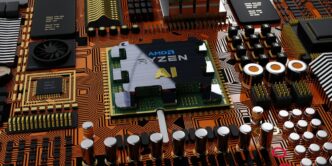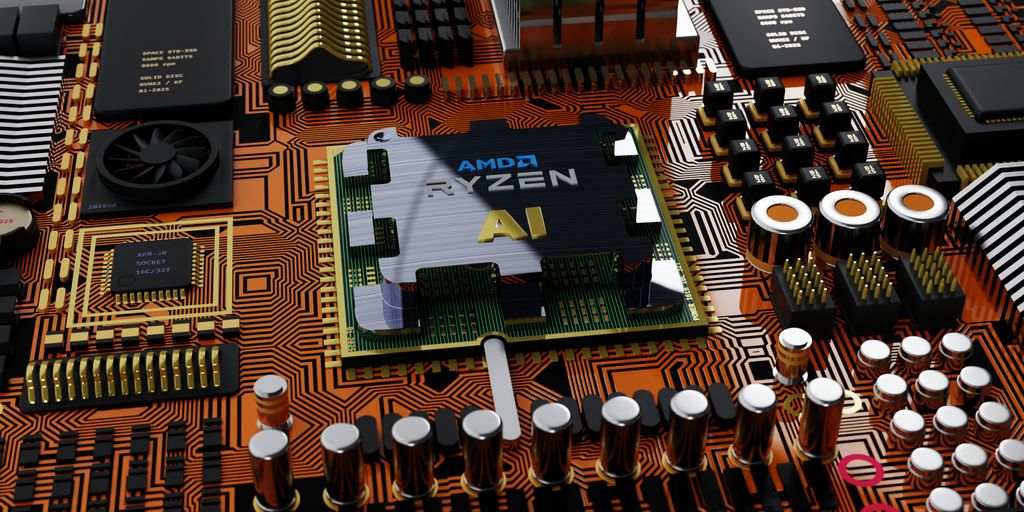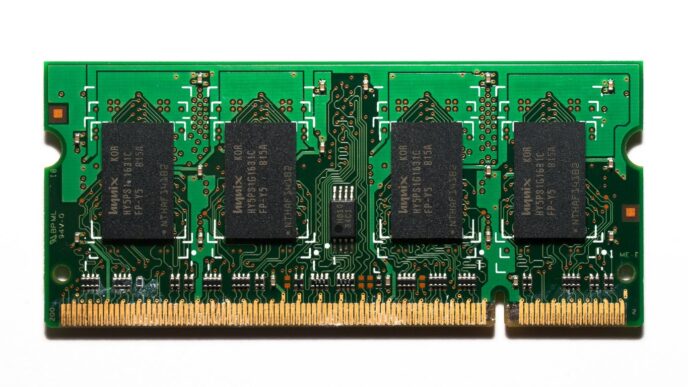Ever wondered if your computer is really pulling its weight? Maybe you just got some new parts, or your old machine feels a bit sluggish. Knowing how your PC stacks up is pretty important, and that’s where PC benchmark software comes in. It helps you figure out what your system can truly do, where it might be struggling, and how it compares to other setups. This article will walk you through some of the best PC benchmark software out there, so you can get a clear picture of your rig’s performance.
Key Takeaways
- PC benchmark software helps you see how well your computer parts are working.
- There are different tools for different needs, like gaming or just checking overall speed.
- Some benchmark tools are free, and others you have to pay for.
- Monitoring temperatures and other stats is a big part of benchmarking.
- Using these tools can help you make your PC run better and find any issues.
Understanding PC Benchmark Software
Why PC Benchmarking is Essential
Ever wonder if your computer is really pulling its weight? Or maybe you just installed a new graphics card and want to see if it was worth the cash. That’s where PC benchmarking comes in. It’s basically like giving your computer a report card, showing you how well its different parts are performing under various tasks. Benchmarking helps you figure out if your system is running as it should, or if there are any hidden issues holding it back. It’s not just for bragging rights, either. Knowing your PC’s performance can help you make smart decisions about upgrades, troubleshoot problems, and even compare your setup to others. It’s a pretty useful tool for anyone who wants to get the most out of their machine.
Key Components for Benchmarking
When you’re benchmarking, you’re usually looking at a few main parts of your computer. Each one plays a big role in overall performance, and different benchmarks will focus on different components.
- CPU (Central Processing Unit): This is the brain of your computer. CPU benchmarks test how fast it can crunch numbers, handle multiple tasks, and process data. Think of it as testing how quickly your computer can think.
- GPU (Graphics Processing Unit): If you’re into gaming or video editing, the GPU is super important. GPU benchmarks measure how well your system can render graphics, handle complex visual effects, and maintain smooth frame rates. It’s all about how well your computer can draw pictures.
- RAM (Random Access Memory): RAM is your computer’s short-term memory. Benchmarks for RAM check its speed and how efficiently it can store and retrieve data that’s actively being used. More RAM, or faster RAM, usually means your computer can juggle more tasks at once without slowing down.
- Storage (SSD/HDD): This is where all your files and programs live. Storage benchmarks test how quickly your hard drive or solid-state drive can read and write data. A fast drive means quicker boot times and faster loading of applications and games.
Interpreting Benchmark Results
So, you’ve run a benchmark, and now you have a bunch of numbers. What do they even mean? Well, interpreting benchmark results is all about context. A higher score is generally better, but it’s not always that simple. You need to compare your scores to other systems with similar hardware, or to your own system’s previous scores if you’ve made changes. Many benchmarking tools provide online databases where you can see how your PCMark 10 score stacks up against thousands of other users. This helps you understand if your performance is typical, above average, or if something might be off. Look for consistent patterns, too. If one component consistently scores low compared to the others, that might be your bottleneck. Don’t just look at the final number; dig into the details for each component to get the full picture. It’s like looking at a car’s gas mileage – you want to know if it’s good for its class, not just if it’s a high number in isolation.
Top PC Benchmark Software for Gaming Rigs
3DMark for Comprehensive Gaming Analysis
When you’re serious about gaming, you need a benchmark that understands what makes a gaming rig tick. That’s where 3DMark comes in. It’s a go-to for many gamers because it really pushes your system to its limits in ways that matter for games. You’ve got a bunch of different tests, like 3DMark Fire Strike for DirectX 11, Time Spy for DirectX 12, and even Port Royal if you’re into ray tracing. These tests give you a score that tells you how well your PC stacks up against others with similar hardware. It’s not just about a number, though; 3DMark also gives you estimated frame rates for popular games, which is super helpful for understanding real-world performance.
Comparing Your Gaming PC Performance
One of the coolest things about 3DMark is its massive database of results. After you run a test, you get a score, and then you can compare that score to tons of other PCs. This isn’t just about bragging rights; it helps you see if your system is performing as it should. Maybe your GPU isn’t hitting the numbers it should, or perhaps your CPU is bottlenecking things. This comparison feature helps you pinpoint those areas. It’s like having a huge community of gamers all sharing their results, giving you a clear picture of where your rig stands. This kind of insight is invaluable for anyone looking to optimize their gaming experience or even just curious about how their setup compares to others.
Stress Testing for Overclocking Stability
If you’re into overclocking, you know that pushing your hardware past its factory settings can be a bit of a gamble. You want more performance, but you also need stability. 3DMark offers stress tests that are perfect for this. These tests run a benchmark in a loop, over and over again, for an extended period. This puts a continuous load on your components, especially your GPU and CPU, to see if your overclock is truly stable. If your system crashes or shows errors during a stress test, you know you need to dial back your overclock or adjust your cooling. It’s a critical step for anyone trying to squeeze every last bit of performance out of their gaming rig without risking system instability. For those looking to develop their own gaming experiences, understanding these performance metrics is key to creating a smooth user experience. Consider exploring options for a casino game development company to bring your ideas to life.
Best PC Benchmark Software for Overall System Performance
When you’re trying to figure out how your whole computer is doing, not just for games, you need tools that look at everything. These programs check out your CPU, RAM, storage, and even your graphics card, giving you a full picture of your system’s health and speed. It’s like a general check-up for your PC, helping you see if everything is working together nicely or if there are any weak spots.
PassMark PerformanceTest for System Insights
PassMark PerformanceTest is a solid choice if you want to dig deep into your PC’s overall performance. It runs a bunch of different tests on all your main components, like your processor, memory, hard drives, and even 2D and 3D graphics. This software is great for seeing how changes you make, like upgrading a part, actually affect your computer’s speed. You get a score at the end, which you can compare with other systems online. It’s pretty useful for figuring out if a new part really made a difference or if something is slowing you down. It works on Windows, Linux, macOS, Android, and iOS, so it’s pretty flexible.
Novabench for Quick System Checks
If you’re in a hurry and just want a quick idea of how your system is performing, Novabench is a good option. It’s a small program, only about 80 MB, and it runs its tests really fast—we’re talking just a few minutes. It checks your processor, memory, hard drive, and video card. After it’s done, you get a score that you can compare with other users online. It’s a simple way to get a general idea of your PC’s speed without getting bogged down in too many details. It’s mainly for Windows PCs.
Geekbench for Cross-Platform Benchmarking
Geekbench is another popular tool, especially if you want to compare your PC’s performance with other devices, even those running different operating systems. It’s known for its ability to test both single-core and multi-core performance of your CPU, and it also has tests for your GPU. This makes it really good for seeing how your processor handles different kinds of tasks. You can use it on Windows, macOS, Linux, Android, and iOS, which is why it’s so good for optimizing computer performance across various platforms. It gives you a clear score that’s easy to understand and compare.
- It provides separate scores for single-core and multi-core CPU performance.
- It includes GPU compute benchmarks for various workloads.
- Results are easily comparable across different operating systems and devices.
Specialized PC Benchmark Software for Hardware Monitoring
Sometimes, you don’t just need to know how fast your PC is; you need to know why it’s performing the way it is. That’s where specialized hardware monitoring tools come in handy. These aren’t about getting a single score to compare with others. Instead, they give you a real-time look at what’s happening under the hood, which is super helpful for troubleshooting or just keeping an eye on things.
HWMonitor for Real-Time Component Data
HWMonitor is one of those tools that just about everyone who tinkers with their PC has installed. It’s pretty straightforward, which is a big plus. You open it up, and it immediately starts showing you a ton of data about your system’s components. We’re talking about voltages, power consumption, clock speeds for your CPU and GPU, fan speeds, and, probably most importantly, temperatures. It gives you a live feed of your PC’s vital signs, which is incredibly useful for diagnosing issues or just making sure everything is running smoothly.
Here’s a quick look at some of the data points HWMonitor typically displays:
- CPU: Core temperatures, package power, clock speeds (core and bus), utilization.
- GPU: Core temperature, memory temperature, fan speed percentage, clock speeds (core and memory), power draw.
- Motherboard: System temperatures, fan speeds, various voltage rails.
- Storage (HDD/SSD): Drive temperatures.
It’s not flashy, but it gets the job done, providing a clear, organized view of your hardware’s current state. For anyone looking for a reliable hardware monitoring software, HWMonitor is a solid choice.
Diagnosing Temperature Issues with HWMonitor
One of the biggest reasons people turn to HWMonitor is to figure out why their computer might be running hot. High temperatures can lead to all sorts of problems, from performance throttling to system instability. With HWMonitor, you can:
- Monitor temperatures under load: Run a demanding game or a stress test, and watch how your CPU and GPU temperatures react. This helps you see if your cooling solution is adequate.
- Identify specific hot spots: If one core is consistently hotter than the others, it might indicate an uneven cooler mount or an issue with thermal paste.
- Track temperature trends over time: While HWMonitor doesn’t log data extensively, you can keep an eye on it during different activities to see if temperatures are creeping up over time, which could signal dust buildup or a failing fan.
It’s like having a doctor for your PC, giving you the immediate feedback you need to catch potential overheating before it becomes a serious problem.
Limitations of Basic Monitoring Tools
While tools like HWMonitor are fantastic for real-time data, they do have their limits. They are primarily focused on displaying current values, not necessarily on deep analysis or historical logging. For example:
- No extensive logging: You can’t easily go back and review temperature spikes from last week unless you were actively watching it.
- Limited advanced diagnostics: They tell you what the temperature is, but not necessarily why it’s high in a complex scenario, or suggest specific solutions.
- No benchmarking capabilities: These tools are for monitoring, not for running tests that generate performance scores.
So, while they are indispensable for keeping an eye on your system’s health, you might need other benchmark software for more in-depth performance analysis or comparison.
Free and Built-In PC Benchmark Software Options
Windows Performance Monitor for Basic Checks
Windows has some tools built right in that can give you a basic idea of how your computer is doing. One of these is the Performance Monitor. It’s not super fancy, but it can show you things like how much your CPU is working or how much memory your programs are using. It’s good for a quick look if you just want to see what’s going on in real-time or if you want to collect some data over time to figure out why something might be slowing down. You can even set it up to log information, which is pretty neat for tracking down issues. It’s a good starting point, but don’t expect it to give you super detailed scores or comparisons like dedicated benchmarking software would. It’s more for general system health.
MiniTool Partition Wizard for Storage Analysis
When it comes to your hard drives or SSDs, knowing how fast they are can make a big difference in how your computer feels. MiniTool Partition Wizard is a free tool that can help you with this. It’s not just for partitioning your drives; it also has a feature that lets you measure the read and write speeds of your storage devices. This is really useful because slow storage can be a major bottleneck, even if you have a fast processor and lots of RAM. You can see how quickly your drive can access and save files, which is pretty important for things like loading games or opening big programs. It gives you a clear picture of your storage performance.
UserBenchmark for Component Grading
UserBenchmark is another free option that’s pretty popular for getting a quick overview of your PC’s components. It runs tests on your CPU, GPU, RAM, and even your storage drives, and then it gives each component a grade. This can be really helpful for figuring out if one part of your system is underperforming compared to others or to similar hardware out there. It also lets you compare your results with a huge database of other users’ systems, so you can see how your rig stacks up. However, it’s worth noting that UserBenchmark has faced some criticism regarding its scoring methodology and how it ranks certain components, so it’s always a good idea to take its results with a grain of salt and maybe cross-reference with other tools. Still, for a free and easy way to get a general idea of your PC performance metrics, it’s an option many people use. Here’s a quick look at what it checks:
- CPU performance (single-core and multi-core)
- GPU performance (gaming and general computing)
- RAM speed and latency
- SSD/HDD read and write speeds
- USB drive performance (if tested)
It’s a pretty comprehensive free tool, but just remember to consider its limitations when interpreting the results. It’s great for a quick check, but for serious analysis, you might want to look at more specialized software.
Choosing the Right PC Benchmark Software
Matching Software to Your Benchmarking Needs
Picking the right benchmark software is a lot like choosing the right tool for a job. You wouldn’t use a hammer to tighten a screw, right? Same idea here. Before you even download anything, you gotta figure out what you’re actually trying to test. Are you a gamer looking to see if your new graphics card is pulling its weight? Or maybe you’re just curious about your system’s overall health and want to make sure everything’s running smoothly. Each piece of software has its own strengths, and some are way better for specific tasks than others. For instance, if you’re all about gaming, something like 3DMark is probably going to be your go-to. It’s built to push your GPU and CPU in ways that mimic real game scenarios. But if you’re more interested in general system performance, maybe for everyday tasks or productivity, then something like PassMark PerformanceTest might be a better fit. It gives you a broader look at all your components. It’s important to align the software’s capabilities with your specific testing goals. Don’t just grab the first one you see; do a little research to make sure it fits what you need.
Here’s a quick rundown of what to consider:
- Purpose: Are you testing for gaming, general system health, or specific component performance (like an SSD)?
- Components: Which parts of your PC do you want to focus on? CPU, GPU, RAM, storage?
- Depth of Analysis: Do you need detailed metrics or just a quick score?
Considering Free vs. Paid PC Benchmark Software
So, you’ve got your needs figured out, and now you’re probably wondering about the cost. There’s a whole bunch of free benchmark software out there, and honestly, some of it is pretty good. Tools like HWMonitor can give you real-time data on temperatures and clock speeds, which is super handy for basic monitoring. And then you’ve got things like UserBenchmark, which can give you a quick grade on your components and compare them to others. The free options are great for getting your feet wet or for quick checks. But, and this is a big "but," they often lack the depth and advanced features you get with paid software. Paid options, like the full version of 3DMark or PassMark PerformanceTest, usually offer more detailed tests, better reporting, and often, more reliable comparisons against a larger database of results. They might also include stress testing features, which are really useful if you’re into overclocking and want to make sure your system is stable. Think about it like this: a free app might tell you your car is running, but a paid diagnostic tool will tell you exactly why that check engine light is on. For serious enthusiasts or those who need precise data, the investment in paid software can be worth it. For example, a water-cooled gaming laptop would benefit from detailed thermal analysis that paid software often provides.
Understanding Software Limitations and Controversies
Alright, so you’ve picked your software, you’re running tests, and you’re seeing numbers. That’s great, but it’s also important to remember that no benchmark software is perfect. They all have their limitations, and some even have a bit of controversy swirling around them. For example, some free tools might not be as accurate as their paid counterparts, or their databases for comparison might be smaller or less frequently updated. Then there’s the whole issue of how some software weights different components. UserBenchmark, for instance, has faced criticism for how it scores CPUs, with some folks arguing it unfairly favors certain brands or architectures. This can skew results and give you a misleading idea of your system’s true performance. It’s always a good idea to cross-reference results from different tools if you’re really trying to get a clear picture. Also, remember that benchmarks are synthetic tests; they don’t always perfectly reflect real-world performance. A high score in a benchmark doesn’t automatically mean your favorite game will run flawlessly. It’s a guide, not a gospel. Always take the results with a grain of salt and consider them alongside your actual experience using your PC.
Here are some things to keep in mind:
- Accuracy: Free tools might not always be as precise as paid ones.
- Bias: Some software might have scoring methodologies that favor certain hardware.
- Real-world vs. Synthetic: Benchmark scores are not always indicative of actual performance in daily use or specific applications.
Optimizing Your PC with Benchmark Software
Identifying Performance Bottlenecks
So, you’ve run your benchmarks, and now you’ve got all these numbers. What do they even mean? Well, the whole point of benchmarking is to figure out what’s holding your computer back. Think of it like a detective trying to solve a mystery. You’re looking for the weakest link, the component that’s not pulling its weight. Maybe your CPU scores are great, but your GPU performance is lagging behind. That’s a bottleneck right there. It means your graphics card can’t keep up with the rest of your system, especially when you’re trying to play the latest games or do some heavy video editing. Or maybe your hard drive is super slow, making everything feel sluggish even if your processor is top-tier. Benchmarking helps you pinpoint these exact issues.
Measuring Impact of Hardware Upgrades
Let’s say you’ve identified a bottleneck, like that slow hard drive we just talked about. You decide to upgrade to a speedy new SSD. How do you know if it actually made a difference? That’s where benchmarking comes in again. You run the same tests before and after the upgrade. Comparing those scores side-by-side gives you concrete proof of the improvement. It’s not just a feeling; it’s data. This is super useful for:
- Confirming that your new component is working as advertised.
- Seeing the real-world impact of your investment.
- Deciding if further upgrades are necessary.
It’s like a before-and-after photo, but for your computer’s performance. You can see exactly how much faster your system is now.
Fine-Tuning for Peak Performance
Benchmarking isn’t just for big hardware changes. You can also use it to fine-tune your system for peak performance. This means making small adjustments and then re-running benchmarks to see the effect. For example, you might:
- Adjust your fan curves to keep temperatures lower, which can prevent thermal throttling.
- Tweak your RAM timings in the BIOS to squeeze out a little more speed.
- Experiment with different driver versions for your graphics card.
Each little change, when measured with benchmarks, can add up. It’s about optimizing every last bit of potential from your rig. It’s a bit like being a race car mechanic, constantly adjusting and testing to get the best lap times. You’re not just guessing; you’re using data to make informed decisions about your PC’s setup.
Wrapping Things Up
So, there you have it. Picking the right benchmark software really just comes down to what you want to check. Are you trying to see how well your gaming rig stacks up? Or maybe you just want to make sure everything is running okay after a new part? Whatever it is, there’s a tool out there for you. Just remember, these programs are there to give you a snapshot, not the whole story. But they can definitely help you figure out if your computer is doing what it should be.
Frequently Asked Questions
What exactly is PC benchmarking software?
PC benchmarking software helps you check how well your computer’s parts are working, like the brain (CPU) or the graphics card (GPU). It can show you if something isn’t performing as it should or if your computer is getting too hot.
Why should I bother checking my PC’s performance?
It’s super important! Benchmarking helps you see if your computer is running as fast as it should. It can also help you find problems, like a part that’s too slow, or show you if your computer can handle new games or programs.
Do I need to pay for good benchmarking software?
No, not at all! Many great benchmarking tools are free, like some parts of 3DMark or Novabench. They can give you a good idea of your PC’s power without costing a dime.
Which software is the best for my computer?
It depends on what you want to check. If you play games, 3DMark is great for seeing how well your graphics card works. If you just want a quick check of everything, Novabench is super fast. For watching your computer’s temperature, HWMonitor is a good choice.
Can I use built-in tools to check my PC’s performance?
Yes, you can! Tools like Windows Performance Monitor are already on your computer and can give you basic info. MiniTool Partition Wizard can check your hard drive’s speed, and UserBenchmark can compare your parts to others online.
How can benchmarking help me make my computer better?
Benchmarking helps you find what’s slowing your computer down. Once you know, you can decide if you need to upgrade a part, change some settings, or even clean out old files to make your PC run faster and smoother.














